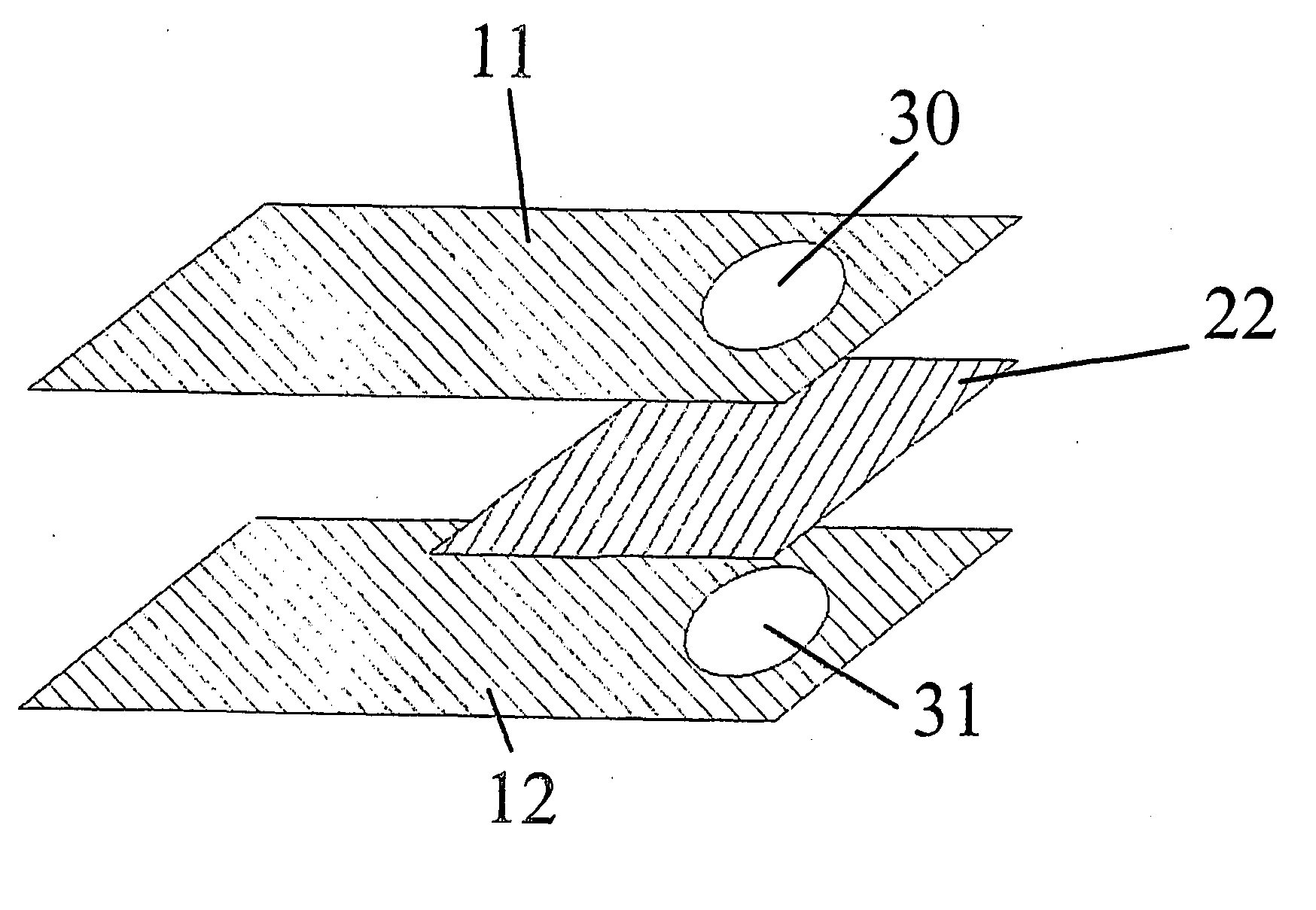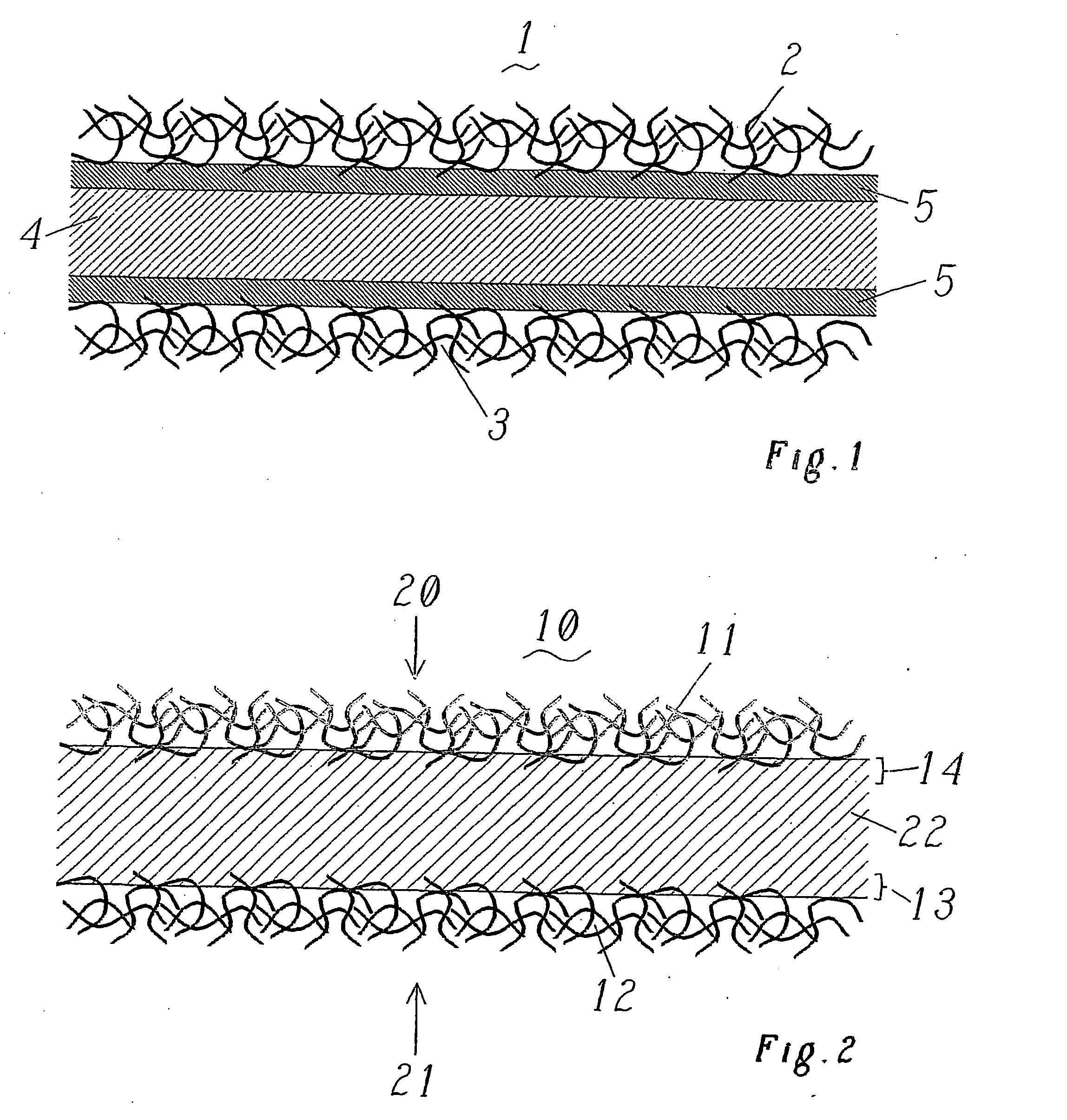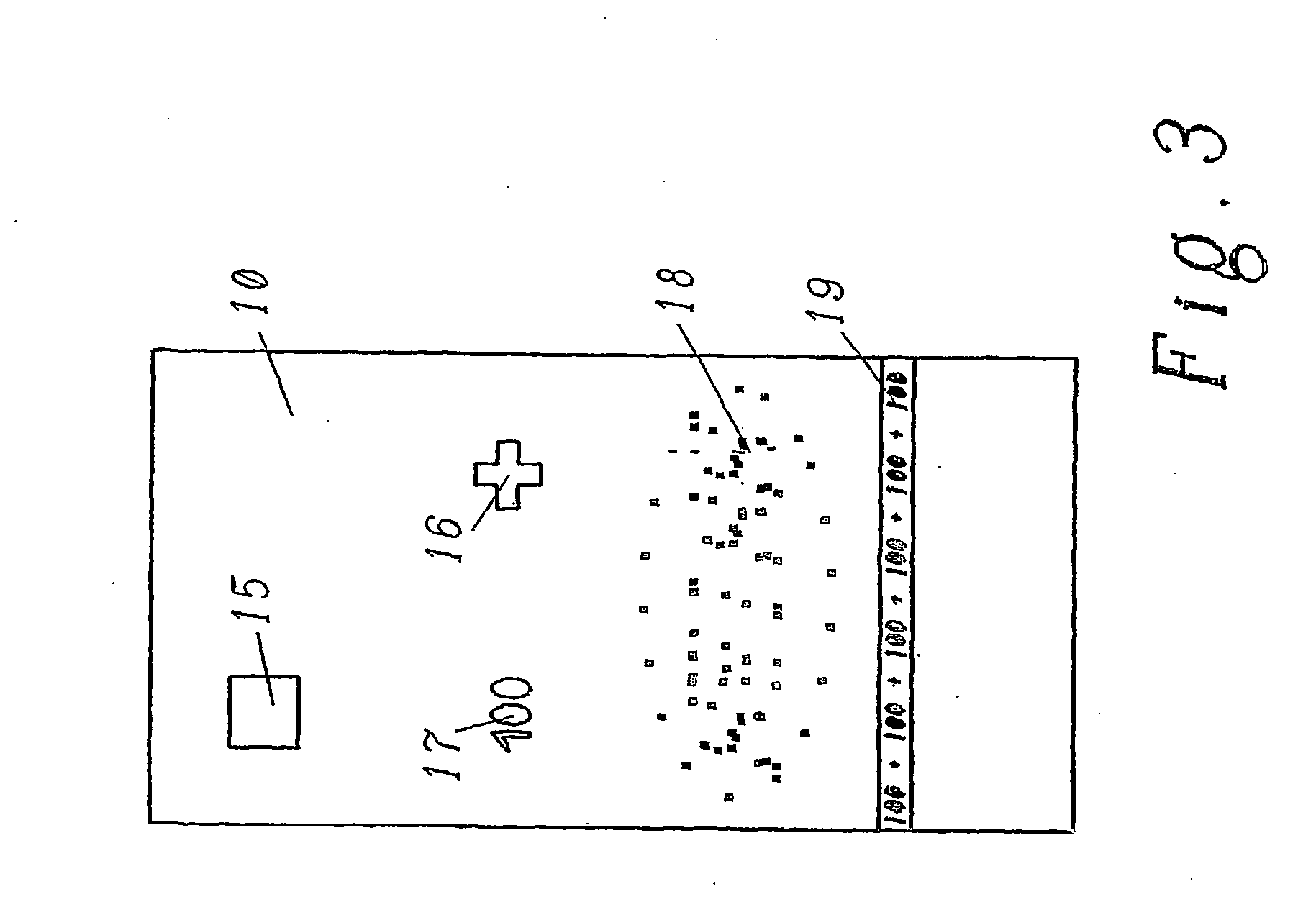Multiple layer laminate
a laminate and multi-layer technology, applied in the field of multi-layer laminates, can solve the problems of complicated adhesion of printing inks or inks
- Summary
- Abstract
- Description
- Claims
- Application Information
AI Technical Summary
Benefits of technology
Problems solved by technology
Method used
Image
Examples
example 1
[0142] 20 mm×100 mm samples of paper A were cut out, and a hole of 5 mm diameter was punched out in each case at one end of each piece. A piece of polymer film measuring 20 mm×40 mm×0.1 mm was then cut out and was placed between the two paper layers A, the two paper layers having been placed one on top of the other in such a way that the holes coincided (cf. FIG. 12). This layer structure was initially placed between two polyimide films in order to prevent adhesion to the copper plates of the press. The compression was then carried out for 2 min at 0.5 MPa for the various polymers at the following temperatures: Grilamid® TR 90 LX: 155° C. and 200° C., Surlyn® K: 125° C., Surlyn® Na: 125° C., nylon 11: 155° C. and 200° C., poly(ethylene-co-methyl acrylate): 125° C.
[0143] In all cases, a strong bond was obtained between the paper layers and the polymer. The two regions of the paper which were not bonded by the polymer layer were torn apart (cf. FIG. 13) this led in each of the cases ...
example 2
[0144] Example 1 was repeated, except that a larger piece of Grilamid® TR 90 LX measuring 24 mm×44 mm×0.1 mm was cut out. Once again, this piece was placed between two paper layers comprising paper A, a small region of the polymer film projecting in each case beyond the edge of the paper layers (FIG. 14). The presence of the resulting fusion region 23 in the region of the edge increased the tear resistance (particularly the initiation of the tear) of the corresponding multiple layer laminate dramatically when compared with example 1.
example 3
[0145] Example 1 was repeated, but windows having a diameter up to 16 mm were produced instead of a window of 5 mm. In all cases, satisfactory multiple layer laminates having excellent mechanical properties were obtained.
PUM
| Property | Measurement | Unit |
|---|---|---|
| temperature | aaaaa | aaaaa |
| temperature | aaaaa | aaaaa |
| temperature | aaaaa | aaaaa |
Abstract
Description
Claims
Application Information
 Login to View More
Login to View More - R&D
- Intellectual Property
- Life Sciences
- Materials
- Tech Scout
- Unparalleled Data Quality
- Higher Quality Content
- 60% Fewer Hallucinations
Browse by: Latest US Patents, China's latest patents, Technical Efficacy Thesaurus, Application Domain, Technology Topic, Popular Technical Reports.
© 2025 PatSnap. All rights reserved.Legal|Privacy policy|Modern Slavery Act Transparency Statement|Sitemap|About US| Contact US: help@patsnap.com



